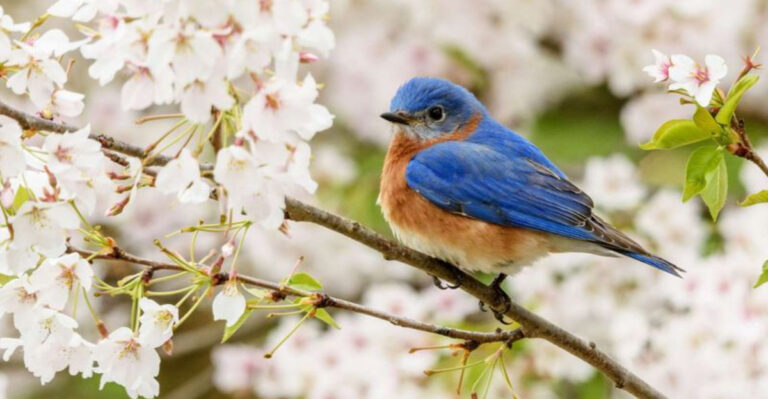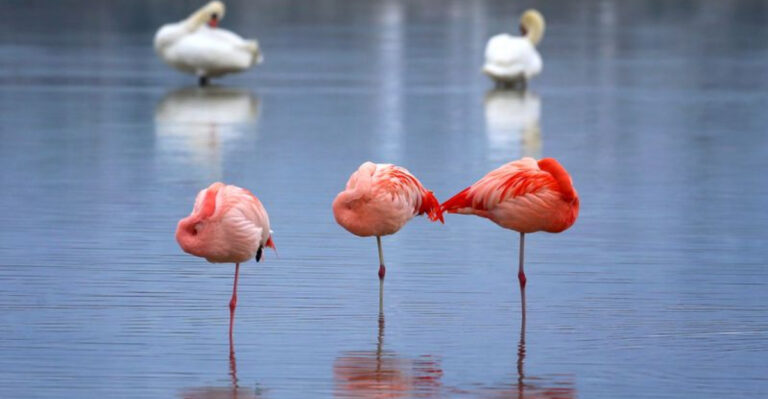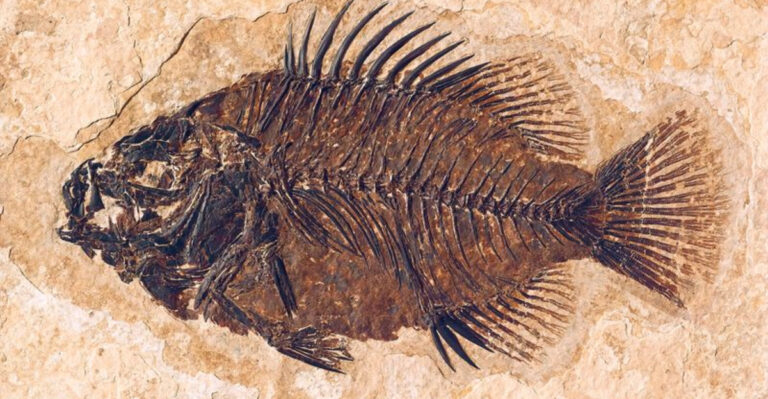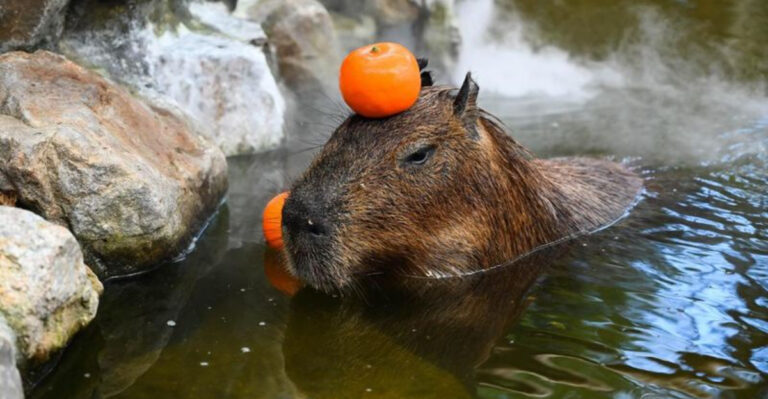The Endangered Binturong And Its Uncertain Future
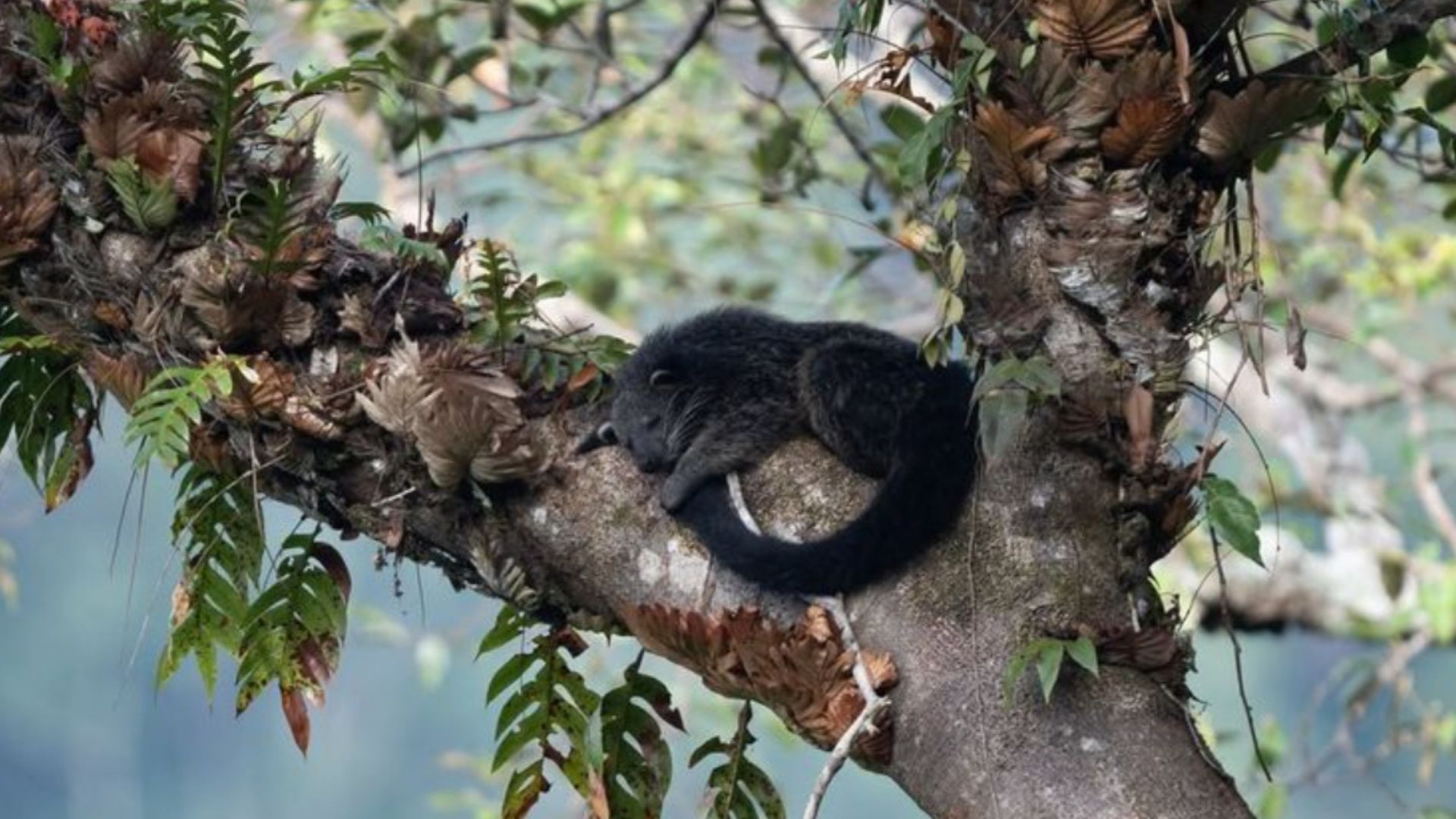
The binturong, also known as the bearcat, is a rare and mysterious creature with a scent that oddly resembles buttered popcorn. Despite its quirky charm, this unique animal is facing a serious threat.
Habitat destruction, illegal wildlife trade, and climate change are pushing its population into decline. Once thriving in dense forests, binturongs are now struggling to survive. If we don’t take action, they could disappear before most people even get a chance to learn about them.
Let’s explore why the binturong is endangered and what can be done to secure its future.
1. The Binturong Is Listed As Vulnerable
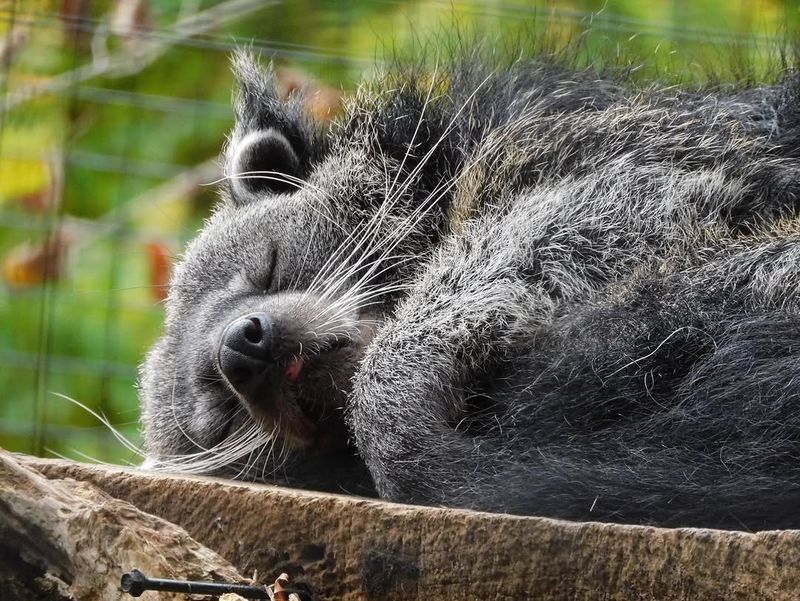
The binturong, a creature that resembles a mix between a bear and a cat, is officially listed as vulnerable by the International Union for Conservation of Nature (IUCN). This listing reflects the significant threats they face in their natural habitats across Southeast Asia. Being vulnerable means that they are at a high risk of extinction in the wild, primarily due to human activities that disrupt their environment.
One of the main challenges the binturong faces is habitat destruction. As forests are cleared for agriculture or urban development, these animals lose their homes and food sources. The shrinking forest cover means less space for binturongs to forage, mate, and thrive.
Conservation efforts are in place to protect the binturong, but they require more support and awareness to be effective. By understanding the binturong’s vulnerable status, we can advocate for stronger protective measures and contribute to their preservation. Raising awareness and educating the public about their plight are essential steps in ensuring this unique species does not vanish from our planet.
2. Deforestation Threatens Their Habitat
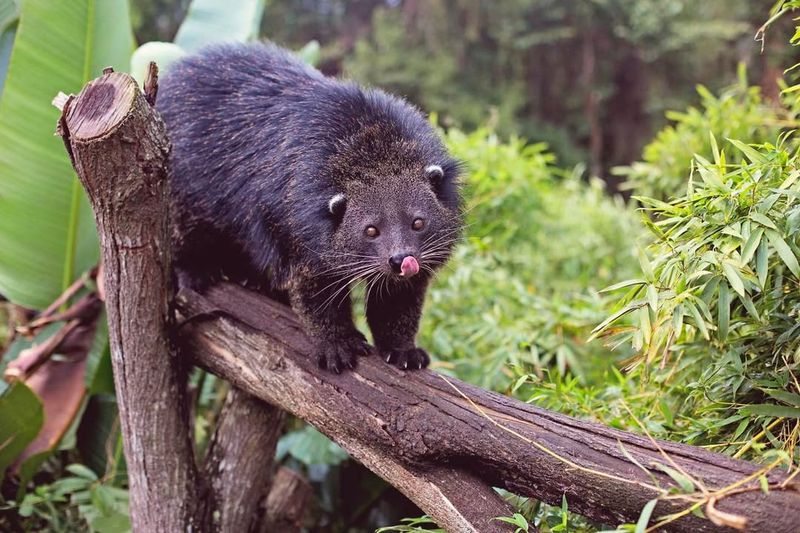
Deforestation is a significant threat to the binturong’s habitat, as vast areas of the Southeast Asian forests are being cleared for agriculture, logging, and urban development. These activities not only strip the land of trees but also destroy the complex ecosystems that binturongs depend on for survival.
The loss of their natural habitat leads to a decrease in food availability and safe nesting sites. Binturongs, which are primarily arboreal, require dense forest canopies to move and live comfortably. Without these trees, their chances of survival diminish drastically.
Efforts to curb deforestation and promote sustainable land use practices are crucial for the binturong’s future. Encouraging reforestation and responsible forestry practices can help restore these crucial habitats. Public support for such initiatives, along with policies aimed at protecting existing forests, can significantly impact the binturong’s ability to thrive in the wild.
3. They Play A Key Role In Forest Ecosystems
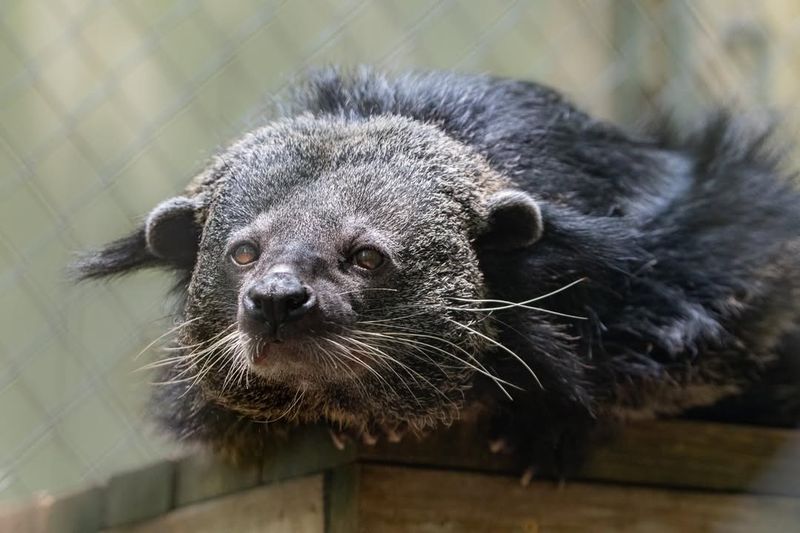
The binturong is more than just a unique creature; it plays a vital role in maintaining the health of forest ecosystems. As a frugivore, or fruit eater, the binturong helps in seed dispersal, which is essential for the regeneration of trees and plants in the forest.
By consuming various fruits and excreting the seeds in different locations, binturongs contribute to the growth of new vegetation. This natural process ensures the continuous renewal of the forest, providing habitats for countless other species.
The presence of binturongs in the forest indicates a healthy ecosystem. Conservationists emphasize the importance of protecting these animals to maintain the balance and diversity of the forest. Supporting the binturong not only aids its survival but also contributes to the overall health of its habitat, making it a keystone species in its environment.
4. Illegal Wildlife Trade Puts Them At Risk
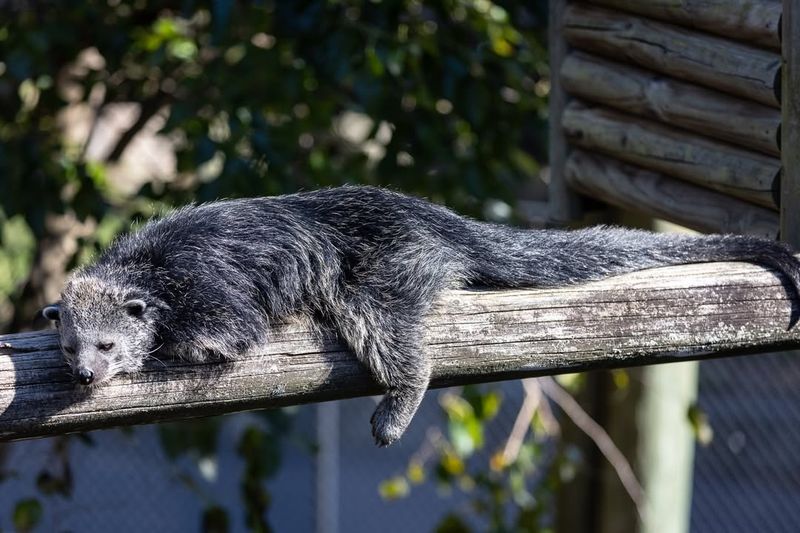
The illegal wildlife trade is one of the gravest threats to the binturong’s survival. These animals are captured and sold either as exotic pets or for their body parts, which are falsely believed to have medicinal properties in some cultures. This trade significantly reduces their numbers in the wild, pushing them closer to extinction.
Binturongs caught for trade often suffer from inadequate care and poor living conditions, leading to a deteriorated quality of life. The stress of captivity can also cause severe health issues, further endangering these creatures.
Combating the illegal wildlife trade requires stringent law enforcement and international cooperation to dismantle trafficking networks. Public awareness campaigns can also deter demand for binturongs and their parts. By discouraging the purchase of these animals, we can help protect them from the clutches of illegal traders and support conservation efforts aimed at their preservation.
5. They Have A Unique Popcorn-Like Scent
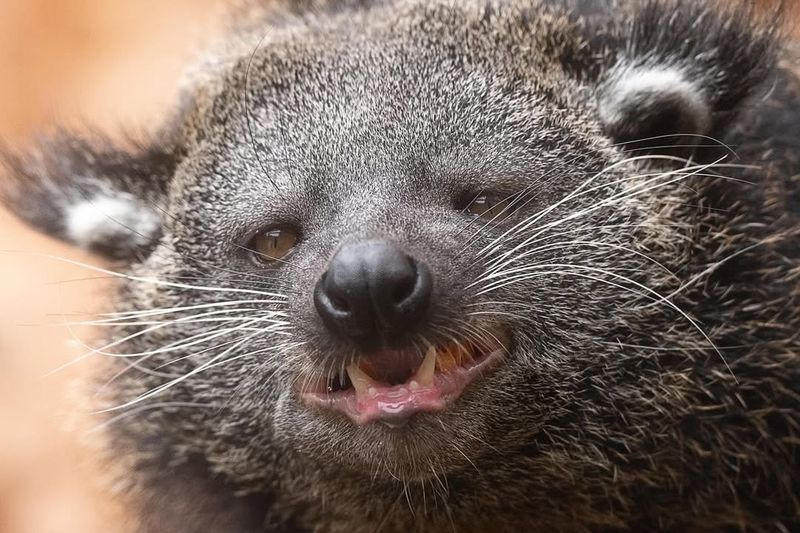
One of the most charming and unusual characteristics of the binturong is its scent, which remarkably resembles that of buttered popcorn. This distinctive aroma is produced by a special gland located under their tails, and it serves multiple purposes in their natural behavior.
The popcorn scent plays a crucial role in communication among binturongs. They use it to mark their territory and signal their presence to other binturongs. This aromatic clue helps them avoid conflicts with others by clearly defining their personal space in the dense forest.
While the scent might seem amusing to humans, it’s an integral part of how binturongs navigate their social and ecological interactions. Understanding such unique traits highlights the complexities and wonders of nature, fostering a deeper appreciation for these intriguing animals.
6. Mostly Nocturnal And Solitary Creatures
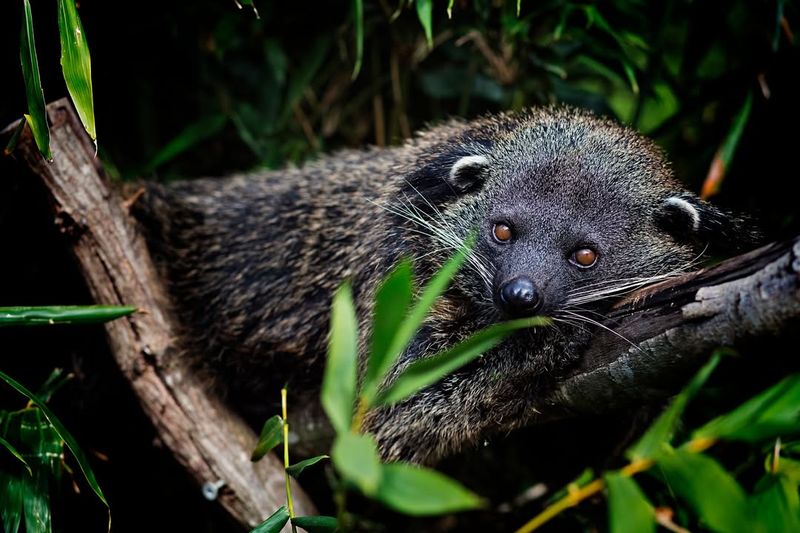
Binturongs are primarily nocturnal creatures, preferring the cover of darkness to conduct their daily activities. This nighttime behavior helps them avoid many predators and human disturbances, giving them an advantage in finding food and exploring their environment.
In addition to being night owls, binturongs are generally solitary animals. They spend their time alone, marking their territory, and only coming together for mating purposes or when a mother is caring for her young. This solitary lifestyle minimizes competition and ensures that each individual has access to the resources they need.
Understanding the solitary and nocturnal nature of binturongs is essential for conservation efforts, as it informs the creation of protected areas and management plans. By respecting their habits and habitats, we can better support their survival and ensure that these unique creatures continue to thrive in the wild.
7. Their Prehensile Tails Help Them Climb
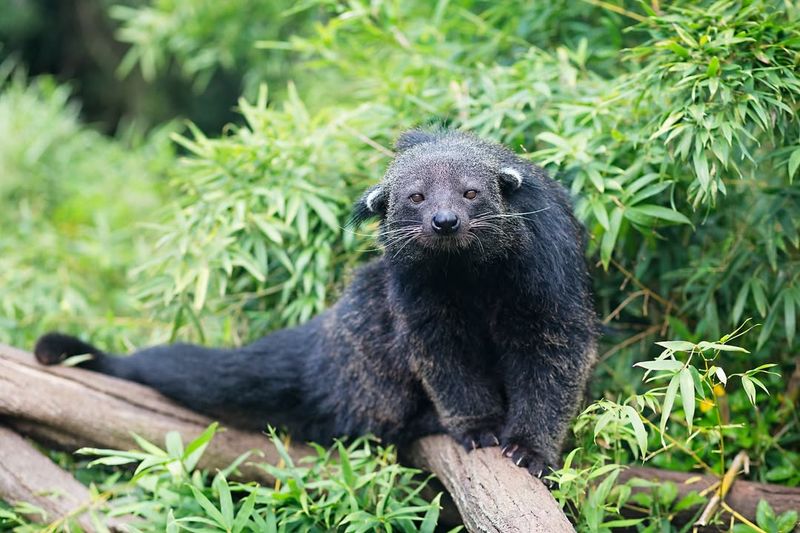
A binturong’s tail is not just for show; it serves as an essential tool for climbing and balance. Their prehensile tail, which can grasp and hold objects, acts as a fifth limb, allowing them to navigate the treetops with remarkable agility.
This adaptation is particularly beneficial for a species that spends a significant amount of time in the forest canopy. The tail helps them move between branches with ease, access food sources, and escape potential threats. It’s a brilliant example of nature’s engineering at its finest.
The prehensile tail also enhances their ability to forage effectively and maintain stability while exploring their arboreal habitat. Observing how binturongs use their tails can inspire awe and encourage a deeper interest in preserving their natural environments.
8. Food Scarcity Is Becoming A Problem
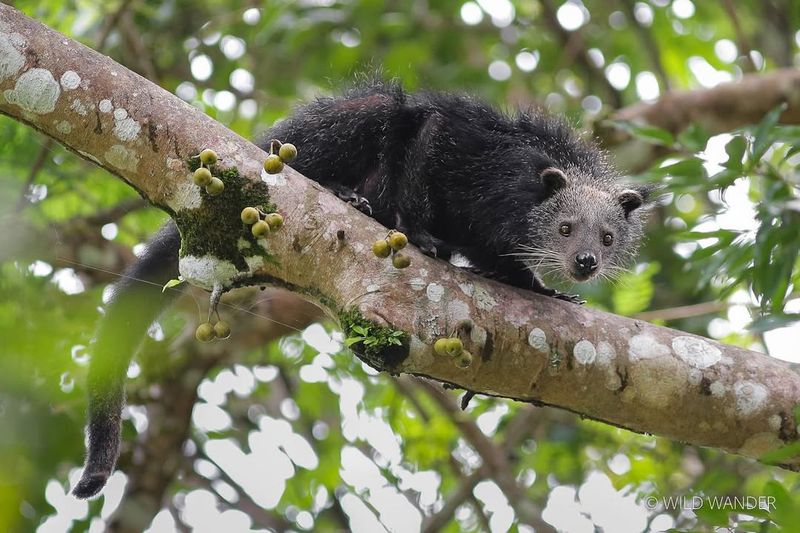
Food scarcity is an emerging concern for binturongs, as changes in their habitat impact the availability of their primary food sources. Deforestation and human encroachment reduce the abundance of fruits and other vegetation that binturongs rely on, leading to increased competition for these diminishing resources.
As their natural food supply dwindles, binturongs may be forced to venture closer to human settlements in search of sustenance. This not only brings them into potential conflict with humans but also exposes them to new dangers, such as traffic and domestic animals.
Efforts to mitigate food scarcity include habitat restoration and the establishment of protected areas that support the growth of their natural diet. By addressing food availability, we can help ensure that binturongs have the resources they need to survive and thrive, reducing the pressures that threaten their existence.
9. Often Misunderstood And Overlooked
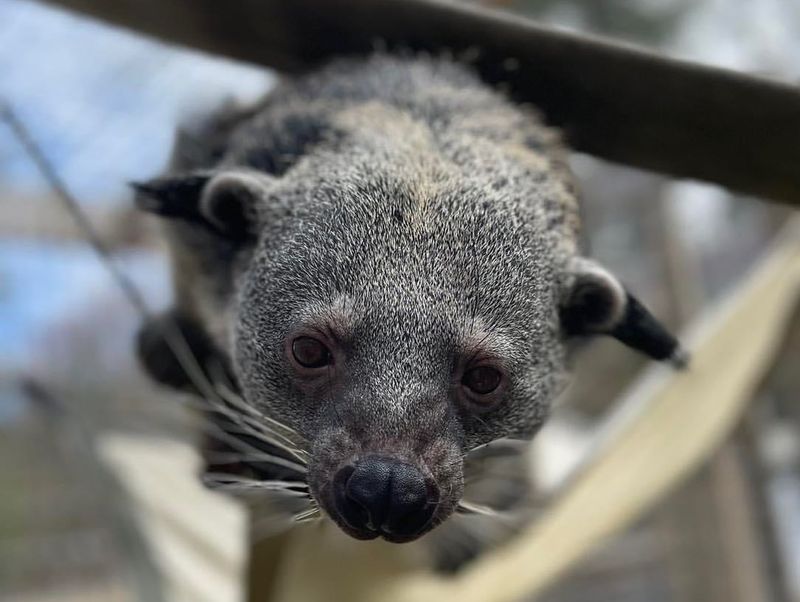
Despite their unique appearance and ecological importance, binturongs are often misunderstood and overlooked by the general public. Their nocturnal and elusive nature means they are rarely seen, leading many to be unaware of their existence or the threats they face.
This lack of awareness contributes to the challenges in garnering support for conservation efforts. Without public interest and understanding, securing funding and implementing effective protection measures becomes increasingly difficult.
Educating communities about the binturong’s role in the ecosystem and its current plight is crucial. By spreading knowledge and appreciation for these fascinating animals, we can foster a sense of responsibility and urgency to protect them. Greater visibility can drive positive change, encouraging more people to join the cause in preserving the binturong for future generations.
10. Conservation Programs Are In Place
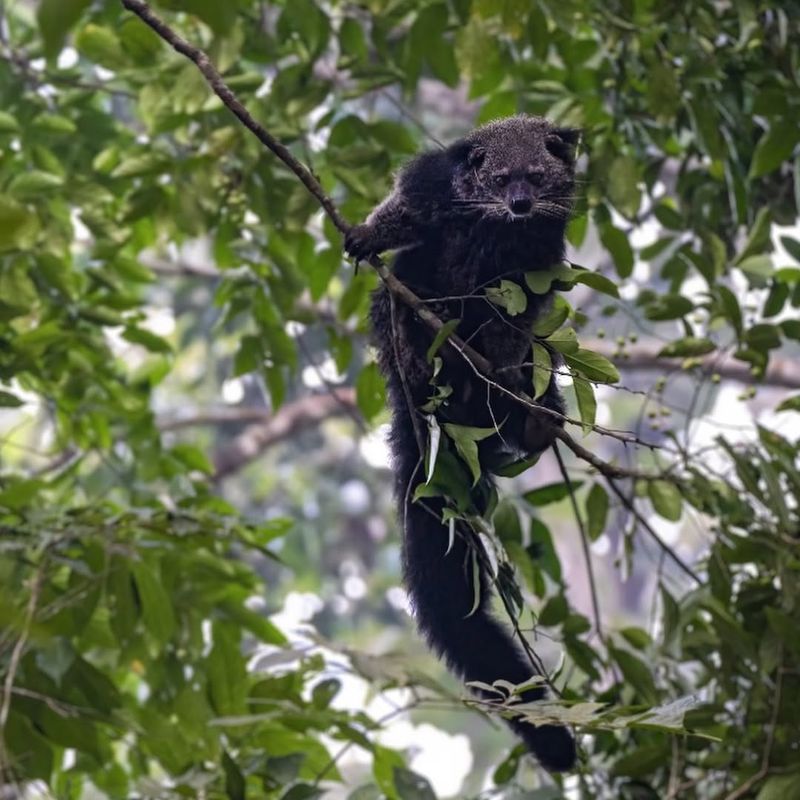
Various conservation programs are actively working to protect the binturong and its habitat. These initiatives aim to address the multiple threats faced by this species, from habitat destruction to illegal trade, by implementing targeted strategies and community involvement.
Many programs focus on habitat restoration, anti-poaching efforts, and awareness campaigns. By engaging local communities and governments, they strive to create sustainable solutions that benefit both the binturongs and the people who share their environment.
Supporting these conservation programs is vital for the binturong’s survival. Public involvement, whether through donations, volunteering, or advocacy, can amplify their impact and ensure that these remarkable creatures continue to thrive in their natural habitats. Together, we can make a difference and safeguard the future of the binturong.
11. Climate Change Adds More Challenges

Climate change poses additional challenges to the binturong’s survival, compounding the existing threats to their habitat and food sources. Changes in temperature and precipitation patterns can alter the availability of fruits and other vegetation, making it harder for binturongs to find food.
As climate change affects the delicate balance of ecosystems, binturongs may struggle to adapt to the new conditions. Their reliance on specific forest environments means that even small changes can have significant impacts on their well-being and survival.
Addressing climate change requires global cooperation and local action. Efforts to reduce carbon emissions, support reforestation, and promote sustainable practices can help mitigate the impacts on binturongs and other vulnerable species. By tackling climate change, we contribute to the preservation of biodiversity and the health of our planet.
12. Wild Sightings Are Becoming Rare
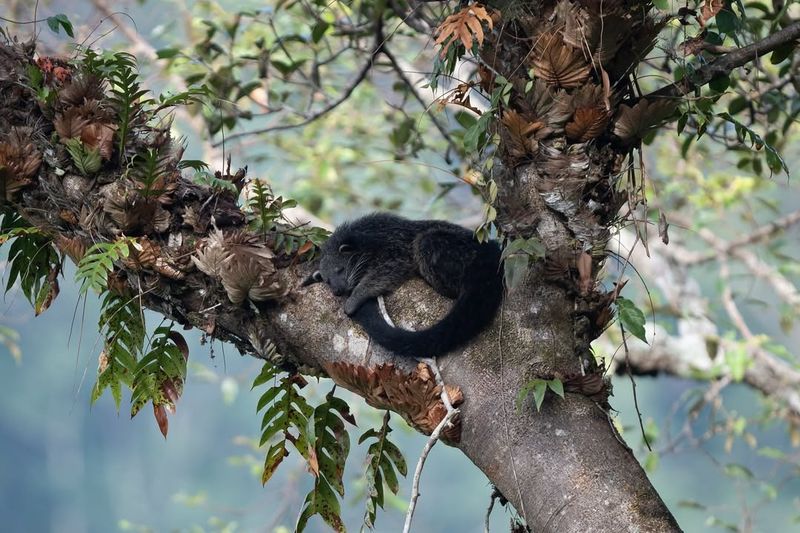
Spotting a binturong in the wild is becoming an increasingly rare occurrence, as their numbers dwindle due to habitat loss and other threats. These elusive creatures were once more commonly seen in their natural habitats, but now, even researchers and conservationists struggle to find them.
The rarity of binturong sightings underscores the urgency of conservation efforts. As their population continues to decline, the chances of encountering these unique animals in the wild diminish, making it harder to study and protect them effectively.
Increased efforts to monitor and preserve their habitats are essential in reversing this trend. By supporting conservation initiatives, we can work towards a future where binturongs are once again a common sight in their native forests, symbolizing a healthy and thriving ecosystem.
13. Raising Awareness Can Help Save Them
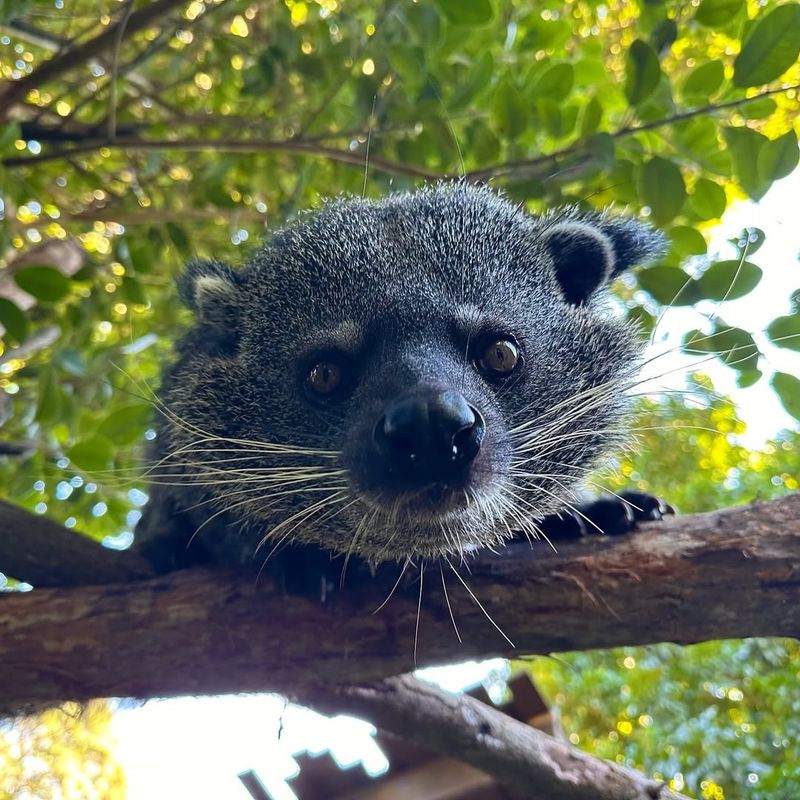
Raising awareness about the binturong and its uncertain future is a powerful tool in the fight for its conservation. Many people are unaware of the binturong’s existence and the vital role it plays in forest ecosystems, which limits the support for protection efforts.
Educational programs and public engagement initiatives can bridge this gap, enlightening people about the importance of preserving the binturong and its habitat. By fostering a sense of connection and responsibility, these efforts can inspire collective action towards their conservation.
Whether through social media campaigns, school programs, or community events, spreading the word about the binturong can lead to increased support for conservation measures. Together, we can raise the profile of the binturong, ensuring that this remarkable species does not face extinction silently.

